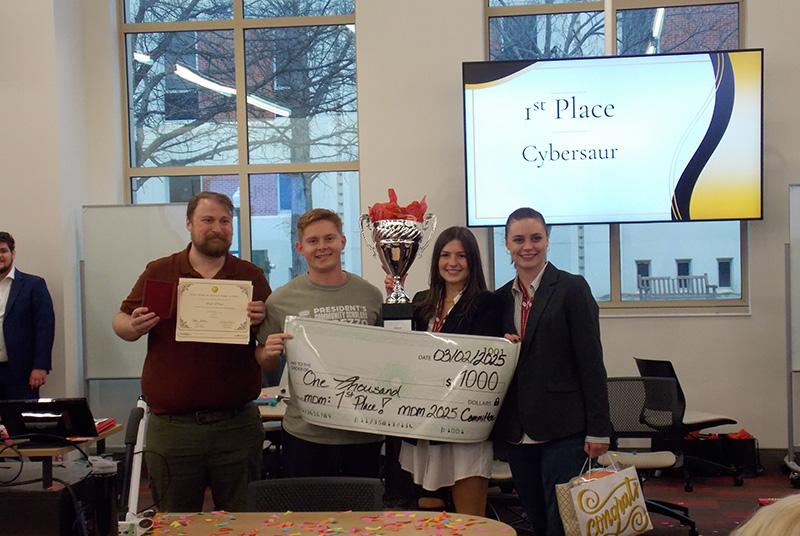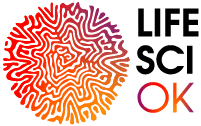By Lynzee Misseldine, VeloCityOKC.com
This story originally ran on VeloCityOKC.com.

The beginning of March marked the seventh annual National Medical Device Make-a-Thon, hosted by the University of Oklahoma (OU) this year. The event brought together 27 teams of college students from 11 different schools across the country, who competed to design and present medical device solutions to real-world challenges. Traditionally held at Texas schools, this year’s competition in Oklahoma was especially significant, as it culminated in an OU team, Cybersaur, taking home the top prize.
This 48-hour event saw teams working nonstop to conceptualize, design and present their solutions. The competition provided participants with the opportunity to test their problem-solving and creativity under pressure, all while working in a challenging environment. In addition to the students, industry professionals and academic mentors played a key role in helping teams refine their ideas.
Focus on Physical Rehabilitation Innovations
The 2025 event topic focused on physical rehabilitation, with subtopics including prosthetics, physical therapy and orthopedics. Many of the devices developed during the competition aimed at addressing these areas, highlighting the need for accessible and effective rehabilitation solutions. One team developed a wearable sleeve that helps stroke patients track and improve muscle recovery through real-time biofeedback. Another focused on an adjustable prosthetic nesting cup system, designed to improve mobility and adaptability for pediatric patients with limb differences as they grow. Additionally, a group developed an innovative implant designed to help individuals suffering from Ehlers-Danlos syndrome (EDS) prevent overextension of the knee. These projects displayed the variety of medical challenges students aimed to tackle through engineering and design.
Meet the Winning Team: Cybersaur from OU
Cybersaur, the winning team from OU, presented a device designed to help children who exhibit toe-walking behavior, a condition that affects gait development. Jayne Dodson, one of the team members, explained their design: “Our device is a simple, inconspicuous solution designed to promote proper gait development in children who exhibit toe-walking behavior. Toe-walking is a condition where children do not follow the natural heel-to-toe walking pattern. Frequent toe-walking can adversely affect musculoskeletal development as early as age 3.”
While toe-walking is often associated with children with autism spectrum disorder (ASD), it can also occur in children with other underlying conditions. This device provides a potential solution for children with ASD and others who experience toe-walking, helping to improve their physical development and quality of life.
Dodson was joined on the team by Emily Bishop, Casey Pierson and Jake Tadlock. Bishop, who will graduate in May with a degree in biomedical engineering and a minor in chemistry, plans to pursue a career in the medical device and research industries. Pierson, interested in academic research, is considering a Ph.D. and will be working with an OU professor on research this summer. Tadlock intends to advance his career in the Air Force while also pursuing a Ph.D. and hopes to establish his own biomedical company in the future. Finally, Dodson is seeking a summer internship to better enhance her skills and further her career in Biomedical Engineering.
“I had the privilege of working alongside my talented teammates—Emily, Casey and Jake—whose expertise and dedication made this journey even more rewarding,” Dodson said. “I look forward to continuing our collaboration as we move forward with our project.” Team Cybersaur is currently working toward filing for a patent for their design.
Sponsorship and the Impact on Oklahoma’s Innovation Scene
Sponsorship from Life Science Oklahoma and the Greater Oklahoma City Chamber helped bring the competition to Oklahoma for the first time. Their support allowed for increased resources, mentorship opportunities and a larger platform for students to present their ideas.
As Michelle Gregory, MBA, director of LSOK, said, “This event was not just about competition, it was about collaboration and creativity. The Medical Device Make-a-Thon brought together some of the brightest college students pursuing careers in bioscience, giving them a platform to explore ideas and tackle real-world challenges. Events like this help foster their skills, build connections and encourage innovation.”
The event highlighted the growing presence of medical innovation in Oklahoma, fostering connections between students, professionals and local industry leaders.
Looking Ahead to the Future of the Make-a-Thon
Luke Pauli, the student director for the 2025 National Medical Device Make-a-Thon and a past participant, played a pivotal role in ensuring the event ran smoothly. He reflected on the competition’s value, particularly in bridging academic knowledge with real-world application. “Having competed in past years, I understand firsthand the challenges and excitement that come with developing a medical device in such a short amount of time,” said Pauli. “This event provides students with not only a chance to apply their academic knowledge but also the opportunity to work alongside industry experts, gain firsthand experience and collaborate with peers from across the country.”
Pauli also expressed pride in this year’s teams, praising their creativity and passion for innovation. He acknowledged the support from sponsors and volunteers that made the event possible, emphasizing the importance of collaboration in bringing these ideas to life.
Pauli is staying involved with the Make-a-Thon, as he will select next year’s host school. He also plans to attend the 2026 event and will support the new host in any way possible.
With many teams already looking ahead to next year, the National Medical Device Make-a-Thon continues to be a major opportunity for students hoping to make an impact in the medical technology field. Thanks to the support of sponsors and mentors, the event remains a space for collaboration and innovation, pushing forward ideas that could one day become real-world medical solutions.
